

Untitled. I don’t know about you but it took me a long time before I would even considered purchasing powdered milk for food storage.
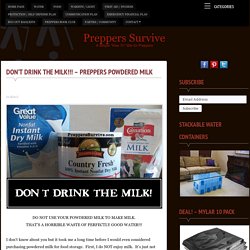
First, I do NOT enjoy milk. It’s just not something you’ll find in my fridge. Second, my parents introduced me to powdered milk as a child, YUCK! Untitled. This post is cross posted from my blog.
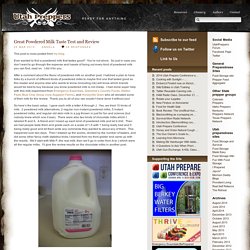
Ever wanted to find a powdered milk that tastes good? You’re not alone. 20+ Foods that must be re-packaged for long-term storage and how to repackage them. As a follow-up to my blog post about which foods you shouldn’t plan on storing long-term, here’s a list of foods typically found at grocery stores that can be stored but must be repackaged.
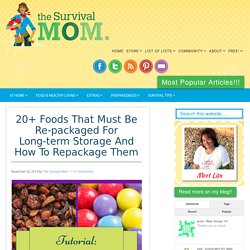
Keep in mind, that by repackaging these foods you will also be protecting them from oxygen, pests, and humidity, three of the five enemies of food storage. (The other 2 are heat and light.) Raisins and other dried fruitOatmealBreakfast cerealsAny type of cookie or crackerBeansRicePastaBread crumbsCornmealCandyPancake mix (Sometimes these are packaged directly inside the cardboard box without any type of inner plastic bag.)Pasta, rice, and potato convenience mixes, such as Rice-a-Roni, Pasta-Roni, instant potatoes, scalloped potato mixes, etc. Repackaging with a vacuum packing machine. Forever foods and your food storage pantry. The original list, “10 cooking staples that can outlast you“, was written by Laura Moss.
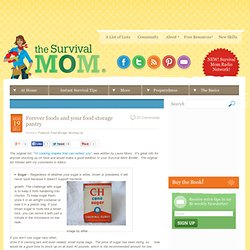
It’s great info for anyone stocking up on food and would make a good addition to your Survival Mom Binder. The original list follows with my comments in italics. Sugar – Regardless of whether your sugar is white, brown or powdered, it will never spoil because it doesn’t support bacterial image by afilergrowth. The challenge with sugar is to keep it from hardening into chunks. If you don’t use sugar very often, store it in canning jars and even sealed, small mylar bags. Pure vanilla extract – If you have pure vanilla extract in the back of the cupboard, there’s no need to throw it out because it lasts forever.
Oxygen Absorber Recommended Amounts. Home Storage - store.lds.org. MASON JAR, and OXY ABSORBER CANNING SESSION - Page 2. Packing Your Food Using Oxygen Absorbers. View larger image.
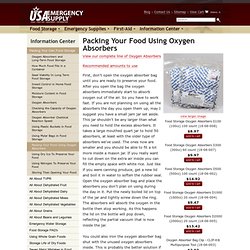
Storing Dehydrated Food for Long-term Storage. Here are some Q U I C K L I N K S to get you going!

Start your journey here: SIX SIMPLE STEPS. Helpful Tips. Note: The following are claimed applications and affects of various herbs as explained via “herbalism” or “herbal medicine.”
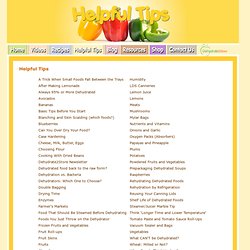
Herbs are considered a “supplement” and not a “medication.” As such, many of the effects and remedies listed below have been documented and observed by many people, but are (for the most part) not acknowledged by the FDA.What does that mean? That means that you may or may not experience the same remedying effects of these supplements. Also, it means that there are no agreed or constrained “doses” for these supplements. keep in mind, it is always possible to have “too much of a good thing.”
So, if you choose to embrace these wonderful potential benefits of herbs, please do so in moderation and with safety in mind. Cooking Dry Beans. How To Build Your One Year Supply Of Food - SHTF & Prepping Central. Every storage plan should include bulk food storage items.

These basics are needed in everyone’s home storage. Long-term food storage is cheap, and healthy. These provisions are your survival foods. The Nitty Gritty of Commerical Food Storage Packaging: Oxygen vs. Nitrogen in Food Storage. It’s easy to pin this for later!
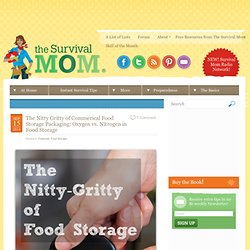
Click here. Over the years, I’ve tried out dehydrated and freeze dried foods from many different companies. Nearly all of the packages I opened, whether cans, buckets, or pouches, had an oxygen absorber inserted inside. 8 Foods You Should Be Storing and HowMelissa K. Norris. Everyone knows we should be storing some kind of food in our home pantries for both emergencies and preparedness.
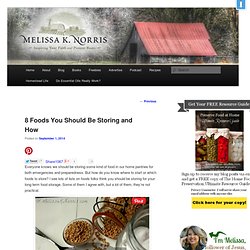
But how do you know where to start or which foods to store? I see lots of lists on foods folks think you should be storing for your long term food storage. Some of them I agree with, but a lot of them, they’re not practical. My Favorite Dehydrated Potatoes. Posted by Linda Loosli on 05 Sep 2014 / 2 Comments. 472 Meals In A Jar! - Save Big, Live Better. Vinegar Works.Wonders. Follow the many easy cleaning tips in this web site and you will be amazed at how well vinegar works! Visit us often for seasonal cleaning tips. How Effective is Cleaning with Vinegar? Vinegar is an effective cleaner in removing soils and mineral deposits such as hard water films, from almost every surface of your home leaving behind a fresh scent. It is also well known for its antimicrobial properties.
Vinegar FAQs: From Balsamic to Apple Cider to Red Wine to Distilled. Frequently Asked Questions What is Vinegar? The dictionary defines vinegar as “sour wine” or “a sour liquid obtained by acetic fermentation of dilute alcoholic liquids and used as a condiment or preservative.” How is Vinegar Made? Vinegar is made by two distinct biological processes, both the result of the action of harmless microorganisms (yeast and “Acetobacter”) that turn sugars (carbohydrates) into acetic acid. Many of our favorite foods involve some type of bacteria in their production – from cheese and yogurt to wine, pickles and chocolate. Although acetic acid is the primary constituent of vinegar aside from water, acetic acid is not vinegar.
What is Vinegar Made From? How To Store Food With A Vacuum SealerGranny Miller. A few years ago I inherited a Food Saver Vacuum Sealer from my mother-in-law. It came complete with lots of plastic bags, a couple of canisters and a funny looking cap thing called a “jar sealer”. I figured it was just another kitchen gadget that she saw on the TV and it looked like a big waste of money to me. I was wrong. Dehydrating Butternut Squash. Hit the 'Print these Instructions' button below.Don't worry, the gold background doesn't print! Phew! From your friends at Easy Food Dehydrating www.easy-food-dehydrating.comCopyright © 2010-2014 ~ easy-food-dehydrating.com find us on Facebookwww.facebook.com/easyfooddehydrating Dehydrating butternut squash takes a little prep work but is loaded with vitamin A, followed by vitamin C, folate, vitamin E, vitamin K, Niacin, and trace amounts of Pantothenic Acid and Thiamin, so it's well worth your time and energy.
In the butternut squash's mineral department potassium ranks high, followed by calcium, magnesium, phosphorus, with trace amounts of selenium,manganese, and zinc. Dollar Store Preps - Survival at Home. Emergency Preparedness: Do your Research Become a PrepperSomething 2 Offer. I’ve been spending quite some time researching all sorts of topics to do with Emergency Preparedness. Beans, Rice, Flour, Salt and Sugar Long term Storage? Quote: How And Why To Store Different Beans. How And Why To Store Different Beans I feel an urgency to show people how and why to store different beans. The price of meat is going up like crazy. 14 Beautiful Flowers that You Can Eat. Edible Flowers: 42 Varieties to Add to Your Garden. Using flowers in cooking has been widely used in many parts of the world including Europe, Asia, East India, Victorian English, and in the Middle East.
During the colonial times of America, settlers also used flowers as a means for sustenance. Recipes have been handed down from generation to generation and we are left with delicious flower filled salads and dishes. Herbal flowers normally have the same flavor as their leaves, with the exceptions of chamomile and lavender blossoms, where the flavor is usually more subtle. How to Use Edible Flowers For best flavor, flowers should be fresh and harvested early in the day. 52 jar method. Gearing up for this trip to California, I've had a lot of requests for my favorite meals that work better in a mylar bag. Dri-Harvest Foods - Dairy. Food Storage Without Electricity - Top 10 Foods to Stockpile.
Best Survival Foods: Non-Perishables That Can Outlive You. Whether you’re sick of throwing out food that’s long past its expiry date, or whether you’re working on preparing a food stockpile in case of an emergency, consumables that practically never spoil can be a huge asset to your household. This article lists non-perishable food items that not only have long shelf lives, but if taken care of properly, these foods stand a chance of never going bad within your lifetime. Guest Post: What are the Gaps in Your Stockpile? Storing Sugar Long Term (white & brown) Storing sugar. Types of Flour - Understanding Different Wheat Flours. Why You Should Have Cream of Tartar Lying Around Your Kitchen - PreparednessMama. Rapadura? Panela? Sucanat? Muscavado? Turbinado? Organic Raw Sugar?
Prudent Food Storage FAQ ver 4.0 Section 3-2.